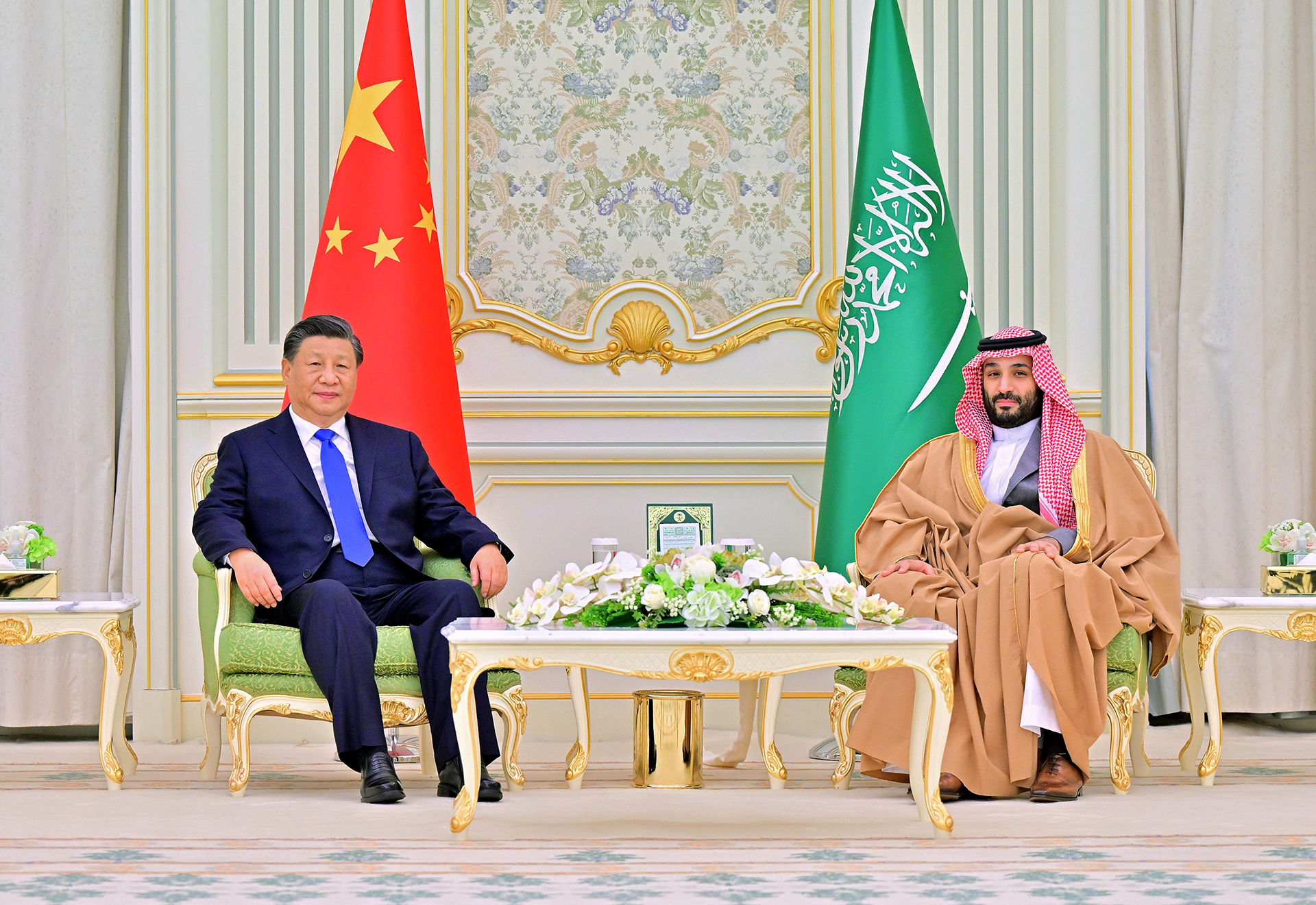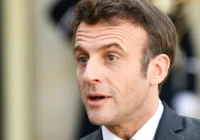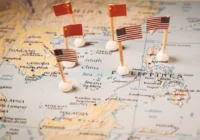On December 7th, China’s President Xi Jinping arrived in Saudi Arabia for a three-day visit. Saudi Crown Prince Mohammed bin Salman hailed it as a “historic new phase of relations with China.”
The visit is a sign that China intends to become a new power player in the region, with Saudi Arabia, one of China’s largest suppliers of oil, by its side. On the other hand, it also illustrated the strained nature of China’s relationship with Iran. According to John Calabrese, Director of the Middle East-Asia Project at the Middle East Institute, Xi’s attendance served as a clear reminder “of the frustrating reality that, in substantive terms, China-Iran relations have stagnated.” The visit only served to further exacerbate what “has long been an asymmetrical, limited partnership” continued Calabrese.
However, the visit “should not be regarded as China no longer being interested in Iran,” Dr. Manochehr Dorraj of Texas Christian University said. “But that Saudi Arabia and the United Arab Emirates (UAE) not only rank as the number one and number two trade partners for China, but they also have the financial capability to invest in the Chinese economy, something that Iran is currently lacking. This is among several factors why the Chinese leadership may prioritize bilateral ties with the Arab World as more significant.”
Changing times and changing priorities
China’s engagement in the Middle East has steadily grown over years, building alliances with countries that are strong economically and stable politically. Before, the region occupied only a secondary role in China’s foreign policy.
The two countries released a 4,000-word joint statement that outlined their alignment on everything from security to oil-related issues. The statement will likely worsen Sino-Iranian relations as the language painted Iran as a malignant actor in the region. This makes it appear to be more the work of the kingdom than China.
Jacopo Scita, a Bourse and Bazar Foundation Policy Fellow concurs, noting it is striking and unexpected that the joint statement “does not reflect the usual, carefully choreographed balancing typical of China’s public discourse on Iran-Gulf Cooperation Council (GCC) relations.”
Barbara Slavin, a Stimson Center Distinguished Fellow, agreed that “Xi definitely seemed to be tilting toward the Saudi/Emirati point of view on a number of issues”.
Dr. Dorraj deemed that China likely agreed to the “wording because Saudi Arabia is a top oil exporter to China and they want Saudi business. At the same time, China is very reluctant to become entangled in domestic affairs or meddle in regional conflicts and prefers stability in the region.” This perhaps explains why they were willing to spend the political capital to mediate a reconciliation between Iran and Saudi Arabia which was announced on March 10th.
Where does Iran now fit?
The statement was a message of dissatisfaction that China wanted to convey to Iran, according to Scita. Naturally, Iran was not pleased by the visit or the statement. According to Scita, the administration of President Ebrahim Raisi perceived both “as a detriment to relations and in particular to its “Look to the East” policy, of which the partnership with China is one of the main pillars.”
“Raisi understood the reasons for President Xi’s visit but was clearly unhappy because the language of the statement aligned more with Saudi Arabia,” Slavin said. This was evidenced in articles published by hardline Iranian media news outlets that expressed outrage over the visit and the language of the statement, according to Dr. Dorraj.
During the visit, China ensured that it will sell arms to Saudi Arabia without any human rights stipulations. Beijing has been assisting the kingdom with building drone factories and selling long-range missiles to Riyadh, which Iran is already aware of.
According to Slavin, Tehran is worried about “Chinese willingness to assist Saudi nuclear development and efforts to acquire a full nuclear fuel cycle.” Iran, “is irrelevant in the Saudi Arabia-China relationship and has other partners to rely on for weapons sales,” Dr. Dorraj continued.
Old country seeks new friends
To add insult to injury, Beijing sent former Vice Premier Hu Chunhua’s visit to Tehran on December 13th. Despite having been recently removed from his post, Chunhua led the delegation to meet with President Ebrahim Raisi.
Dr. Dooraj believes that too much has been made about Chunhua’s involvement. On the other hand, Scita believes that this “implicitly conveys the message that China-Iran relations are subordinated to China-Arab relations.” Slavin agrees, that it’s “clear that Saudi Arabia is much more important to Beijing than Iran.” Despite cuts in oil prices, Iran remains a junior partner compared to Saudi Arabia and the GCC.
Examining China’s foreign policy in the region helps in understanding the subordinate role of Iran. For Scita, it’s classic strategic hedging with a focus on establishing ties with strong economies and stable political systems.
Calabrese sees “China focused more on Saudi Arabia and the other GCC states in the near term, with an eye towards building its relationship with Iran in the long term if/when conditions allow”.
Calabrese doesn’t foresee the status quo changing in the near future. Improving relations would require lifting Western sanctions and reopening negotiations of the Joint Comprehensive Plan of Action (JCPOA), which Tehran is unwilling to do. Therefore, China will continue to sideline Iran as it reorients its regional diplomatic strategy.
Tehran’s place within the Belt and Road Initiative
Tehran still remains valuable for China’s Belt and Road Initiative (BRI). Calabrese noted that Iran’s location remains “a very important potential node along the BRI.” Dr. Dorraj agrees, adding that Iran is situated along the largest coast in the Persian Gulf with many ports to facilitate the movement of Chinese goods, while also possessing a large consumer base of around 85 million people.
Scita adds that “Iran’s prominent place in the BRI is an unfulfilled potential and it’s preventing Tehran from fully integrating into China’s westward infrastructural and investment projects.” Tehran has yet to fully integrate into the BRI primarily because “sanctions have made it more difficult for China to invest in Iran and there are no signs that Tehran is ready to accept a deal reviving the JCPOA that would provide sanctions relief.”
In comparison, Chinese investment in Saudi Arabia and the UAE faces no such impediments. This is because “China formally states they are in favor of partnering with ‘Strong States,’” Dr. Dorraj said. In other words, China prefers countries that enjoy political stability and are able to safeguard their relations.
As China’s vested interests grow in the Middle East, so will the need to protect them. The recent wave of protests in Iran has posed a serious challenge to the regime’s legitimacy. In contrast, Saudi Arabia (and the GCC more broadly) is politically stable, is largely free of domestic unrest, and has a relatively robust economy. All of this is important for Beijing, Dr. Dooraj said.
Looming questions for the future
On February 14, President Ebrahim Raisi traveled to Beijing on an invitation from President Xi Jinping. While some analysts hailed the visit as an indication that “China-Iran relations are warming,” other experts contended that it was more symbolism than substance.
For example, Slavin believes that the visit “seemed more like a way for Raisi to get away from his mounting domestic problems, including the protests over the enforced hijab and the sinking Iranian currency.”
Raisi did not exactly return empty-handed. The Iranian president signed more than 20 cooperation agreements and memorandums of understanding but according to Calabrese, “the documents contained pledges, and nothing more.” “Even the Iranians realize they are junior partners,” Calabrese added.
Jason Brodsky, Policy Director of United Against Nuclear Iran, believes that China will still continue to balance its interests with Saudi Arabia and Iran, former regional rivals. In March, as previously mentioned, Iran and Saudi Arabia reached an agreement in Beijing to restore diplomatic ties after a 7-year rift.
Dr. Dooraj disagrees with the alarmism from many experts who argue that Beijing has essentially moved on from Iran. “China spent political capital to mediate and reconcile ties between both states and demonstrates how effective Chinese diplomacy has been in comparison to the United States,” Dr. Dooraj said.
Calabrese adds that the Chinese-brokered deal also illustrates “the advantage that Beijing has over Washington in leading on this particular issue, namely a constructive relationship with and positive leverage over Tehran.”
Let’s not forget, Calabrese said, that “There are six GCC states. There is only one Iran. Of those six Gulf Arab states, the energy and other ties with China have become far more extensive and promising than with Iran, especially because of the latter’s economic and political isolation.”
For now, Slavin asserts that “Iran is losing ground to the Arabs in terms of Chinese foreign relations.” Beijing’s interests align with Saudi Arabia and the GCC. Nevertheless, China sees no reason to alienate Iran. Therefore, China will continue to maintain ties with both Saudi Arabia and Iran, even it prioritizes one over the other.
[Naveed Ahsan edited this article.]
The views expressed in this article are the author’s own and do not necessarily reflect Fair Observer’s editorial policy.
Support Fair Observer
We rely on your support for our independence, diversity and quality.
For more than 10 years, Fair Observer has been free, fair and independent. No billionaire owns us, no advertisers control us. We are a reader-supported nonprofit. Unlike many other publications, we keep our content free for readers regardless of where they live or whether they can afford to pay. We have no paywalls and no ads.
In the post-truth era of fake news, echo chambers and filter bubbles, we publish a plurality of perspectives from around the world. Anyone can publish with us, but everyone goes through a rigorous editorial process. So, you get fact-checked, well-reasoned content instead of noise.
We publish 2,500+ voices from 90+ countries. We also conduct education and training programs
on subjects ranging from digital media and journalism to writing and critical thinking. This
doesn’t come cheap. Servers, editors, trainers and web developers cost
money.
Please consider supporting us on a regular basis as a recurring donor or a
sustaining member.
Will you support FO’s journalism?
We rely on your support for our independence, diversity and quality.







Comment